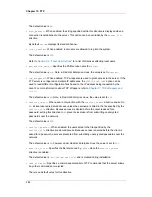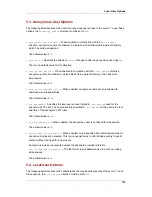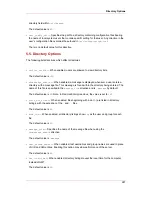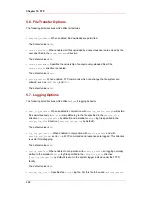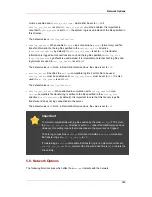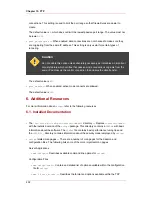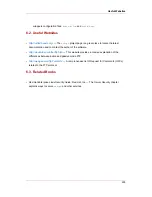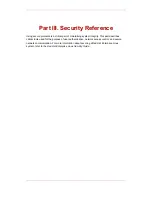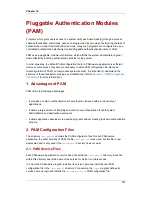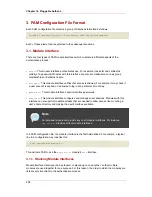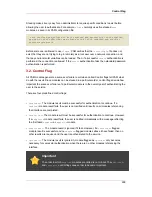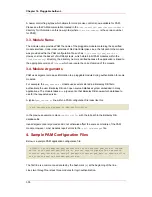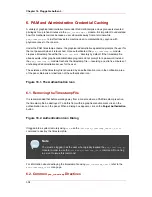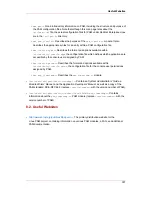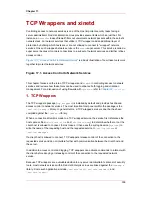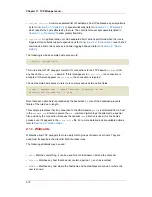
Pluggable Authentication Modules
(PAM)
Programs which grant users access to a system verify each user's identity through a process
called authentication. Historically, each such program had its own way of performing the task of
authentication. Under Red Hat Enterprise Linux, many such programs are configured to use a
centralized authentication mechanism called Pluggable Authentication Modules or PAM.
PAM uses a pluggable, modular architecture, which affords the system administrator a great
deal of flexibility in setting authentication policies for the system.
In most situations, the default PAM configuration file for a PAM-aware application is sufficient.
However, sometimes it may become necessary to edit a PAM configuration file. Because
misconfiguration of PAM can compromise system security, it is important to understand the
structure of these files before making any modifications (refer to
Section 3, “PAM Configuration
File Format”
for more information).
1. Advantages of PAM
PAM offers the following advantages:
• It provides a common authentication scheme that can be used with a wide variety of
applications.
• It allows a large amount of flexibility and control over authentication for both system
administrators and application developers.
• It allows application developers to develop programs without creating their own authentication
scheme.
2. PAM Configuration Files
The directory
/etc/pam.d/
contains the PAM configuration files for each PAM-aware
application. In earlier versions of PAM, the file
/etc/pam.conf
was used, but this file is now
deprecated and is only used if the
/etc/pam.d/
directory does not exist.
2.1. PAM Service Files
Each PAM-aware application or service has a file within the
/etc/pam.d/
directory. Each file
within this directory bears the name of the service for which it controls access.
It is up to the PAM-aware program to define its service name and install its own PAM
configuration file in the
/etc/pam.d/
directory. For example, the
login
program defines its
service name as login and installs the
/etc/pam.d/login
PAM configuration file.
Chapter 16.
297
Summary of Contents for ENTERPRISE LINUX 4.5.0 -
Page 1: ...Red Hat Enterprise Linux 4 5 0 4 5 0 Reference Guide ISBN N A Publication date ...
Page 2: ...Red Hat Enterprise Linux 4 5 0 ...
Page 4: ...Red Hat Enterprise Linux 4 5 0 ...
Page 24: ...xxiv ...
Page 26: ......
Page 36: ...12 ...
Page 72: ...48 ...
Page 112: ...88 ...
Page 122: ...98 ...
Page 140: ...116 ...
Page 142: ......
Page 300: ...276 ...
Page 318: ...294 ...
Page 320: ......
Page 332: ...308 ...
Page 350: ...326 ...
Page 378: ...354 ...
Page 388: ...364 ...
Page 394: ...370 ...
Page 395: ...Part IV Appendixes ...
Page 396: ......


